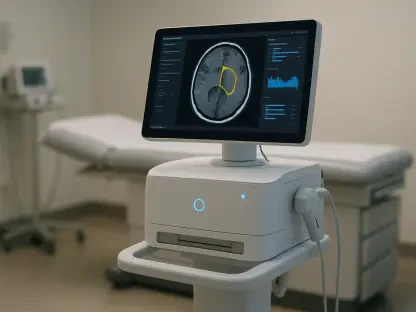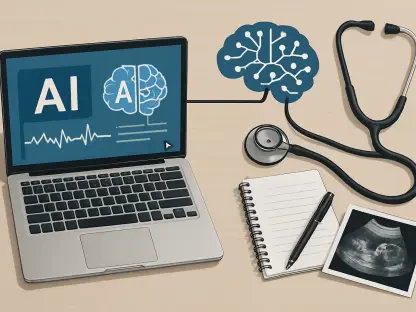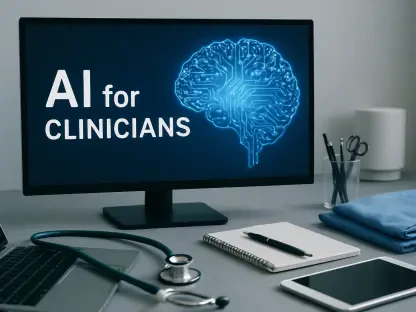The healthcare industry, a critical component of society, increasingly relies on digital operations, making it a target for cyber threats. The interconnectivity of healthcare systems introduces vulnerabilities that can be exploited, risking sensitive patient data. A recent study finds over 90% of healthcare organizations experienced cyberattacks last year, disrupting approximately 70% of patient care and highlighting the sector’s acute vulnerability. The following review provides an in-depth analysis of current cybersecurity challenges and advancements within the healthcare sector.
Cybersecurity Landscape in Healthcare
Cybersecurity in healthcare involves various technologies and protocols aimed at protecting information systems from unauthorized access and ensuring the integrity, confidentiality, and availability of data. Key components include network security, data encryption, access control, and regular security assessments. As healthcare technology evolves rapidly, ensuring its security becomes vital. Cybersecurity not only protects patient information but also maintains trust in digital health infrastructures like electronic health records (EHR) and telemedicine services.
In understanding healthcare cybersecurity, it’s crucial to recognize its unique challenges due to the sensitive nature of medical data and the extensive network of devices and systems. Such technologies range from patient management systems to IoT devices used in monitoring patient health. The field also includes the secure integration of innovative technologies without compromising patient care standards or exposing systems to new threats.
Persistent Cybersecurity Challenges
Vulnerabilities in Legacy Systems
Legacy systems in healthcare present significant vulnerabilities due to outdated technology lacking robust security measures. These systems, often neglected, remain operational as they perform essential functions. However, without regular security updates, they become attractive targets for cybercriminals. The maintenance of these systems is challenging yet essential, as transitioning or completely replacing them can be resource-intensive and operationally disruptive.
Inefficient Risk Management Approaches
In many healthcare organizations, fragmented and inconsistent risk management strategies fail to provide comprehensive protection against cyber threats. This lack of cohesion results in gaps in security measures, leaving organizations susceptible to attacks. Effective risk management should involve unified strategies encompassing all aspects of organizational operations, to anticipate, identify, and mitigate potential cyber threats effectively.
Challenges in Supply-Chain Security
The interconnected healthcare ecosystem, including hospitals, pharmacies, and specialty-care facilities, emphasizes the importance of supply-chain security. Vulnerabilities in external vendors can cascade through healthcare networks, compromising several organizations at once. Notable breaches demonstrate the far-reaching implications of a single vendor compromise, urging the need for stringent supply-chain oversight to safeguard against such risks.
Gaps in Digital Asset Management
An incomplete inventory of digital assets severely jeopardizes an organization’s ability to identify and rectify vulnerabilities. Awareness of all digital assets, which include everything from devices used by medical staff to software applications, is critical for robust cybersecurity measures. Organizations should maintain accurate and comprehensive inventories to deploy cybersecurity defenses effectively and address weaknesses in asset management.
Insufficient Employee Training
Healthcare staff, often on the frontline of patient care, are susceptible to cyberattacks exploiting human error, particularly social engineering. A lack of specialized cybersecurity training leaves staff vulnerable. Comprehensive training programs are crucial, focusing on awareness and preparedness for common cyber threats. This approach significantly enhances organizational defense by reducing human errors that can lead to cybersecurity breaches.
Advances and Modern Trends
Recent progress in healthcare cybersecurity includes better management of legacy systems and improved response planning. Recovery processes have matured, alongside strides in identity management and leadership engagement within cybersecurity. The trend shows a shift towards fortifying identity controls and enhancing data security protocols. Leadership involvement becomes increasingly crucial, emphasizing the alignment of organizational goals with cybersecurity initiatives.
Emerging developments also emphasize advanced identity management systems, crucial for safeguarding healthcare data against credential-based attacks. Such systems add layers of security, ensuring only authorized access and minimizing chances of unauthorized data breaches. These trends indicate a growing recognition of integrating advanced security frameworks, staying ahead of evolving cyber threats.
Practical Implementations in Healthcare
Healthcare institutions are showcasing various cybersecurity measures across departments, demonstrating their commitment to robust security. Effective methodologies include advanced data encryption, secure access protocols, and real-time network monitoring. Innovative implementations, such as AI-driven threat detection systems, have shown promise in identifying and mitigating potential threats swiftly and accurately.
Some healthcare providers also take a proactive approach by conducting regular vulnerability assessments and simulated cyberattack exercises, refining their defensive strategies. These practices illustrate how adopting proactive and dynamic cybersecurity measures enables healthcare entities to protect sensitive data effectively while maintaining operational efficacy.
Overcoming Challenges in Cybersecurity
Despite improvements, the healthcare sector faces several barriers to adopting rigorous cybersecurity practices, including technical limitations and regulatory complexities. Addressing these challenges requires ongoing effort and innovation. Many organizations are working to bridge these gaps through collaborative initiatives, enhancing compliance with regulations, and investing in cutting-edge cybersecurity solutions to foster a more resilient digital healthcare environment.
Efforts to overcome these issues involve a collaborative approach between stakeholders, including technology providers, regulatory bodies, and healthcare professionals. By establishing clear guidelines and fostering a culture of cybersecurity awareness, the sector can significantly reduce its susceptibility to cyber threats and secure patient data more effectively.
Future Outlook of Healthcare Cybersecurity
The future of healthcare cybersecurity promises exciting developments, with emerging technologies aimed at enhancing threat detection and response. Innovative solutions, such as blockchain for secure patient data management and advanced AI analytics for real-time threat prevention, are expected to redefine the landscape. As these technologies progress, healthcare organizations must remain vigilant and adaptable.
The anticipated impact includes stronger defenses, enhanced patient data protection, and a more integrated approach to cybersecurity across the healthcare network. Institutions embracing these developments are likely to see reduced incidents, offsetting potential disruptions, and improving overall healthcare delivery and patient trust within digital systems.
Long-term Evolution and Key Takeaways
Recent reviews highlighted the persistent and evolving threats healthcare faces, emphasizing the need for strong, unified cybersecurity strategies. Current gaps, such as legacy system vulnerabilities and incomplete asset management, underline the importance of a concerted effort to bolster defenses. Continuous improvements in risk management and employee training are crucial in this endeavor.
The ongoing dedication to addressing these challenges provides a clear roadmap for future improvements. With technological advancements and active engagement from healthcare leadership, this sector is poised to make significant strides toward enhanced cybersecurity postures. Leadership and technical innovation will drive this transformation, safeguarding sensitive data and ensuring uninterrupted patient care.









